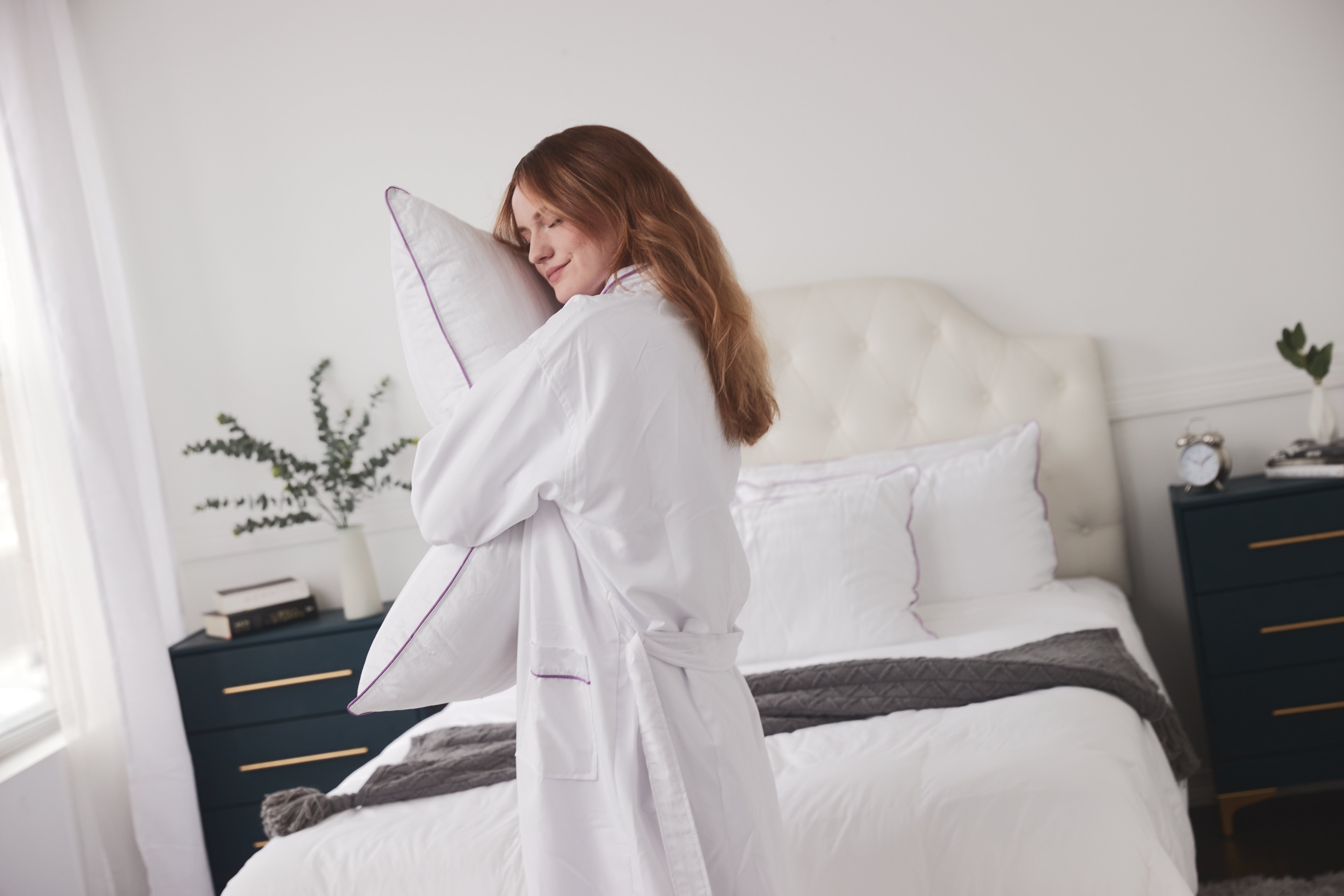
How To Fluff Your Pillow!
A good night's sleep is vital for our health and well-being. But a good night's sleep isn't just about the amount of time we spend sleeping. It depends on the quality of our sleep too.
Choosing the right pillow can significantly impact the quality of your sleep. When you sleep, your body recharges and repairs itself, so having a good night's rest is essential to maintaining health and well-being. By choosing the right pillow, you can help ensure that your nights are as restful and restorative as possible.
Many types of pillows are available, each designed for a specific purpose or to accommodate certain sleep positions. Some prefer soft pillows that cradle the head and neck. Others like firmer pillows that provide more support. Regardless of your preferred style or firmness level, choosing a pillow that offers the right balance between comfort and support is essential.

How to Fluff Your Pillow
No matter what type of pillow you choose, you must take care of it! Pillows need regular fluffing to keep them soft and comfortable. It's important to fluff your pillow because it helps keep the filling evenly distributed. This prevents lumping and ensures that you'll always have a comfortable place to rest your head. Additionally, fluffing your pillow can help it last longer by preventing the formation of clumps that can cause premature wear and tear.
If you notice that your pillow isn't as fluffy as it used to be, don't just toss it out - try giving it a good fluffing! This will help restore its shape and make it more comfortable to sleep on again.
Whether you have a feather or synthetic fill pillow, the process of fluffing is relatively similar:
- Start by removing any dust or debris from the pillow using your hands or a soft brush. Be sure not to use too much force here, as this can damage the materials inside the pillow and cause it to lose shape over time.
- Once you've removed the dust and dirt, it's time to fluff! For feather pillows, this simply means giving them a good shake. Synthetic pillows may require a bit more effort, but the goal is still to get them as full and fluffy as possible.
- Once you've fluffed your pillow to your satisfaction, give it a light patting down to help set its new shape.
Ways to Fluff a Pillow
There are a few different ways to fluff a pillow, but the best way is to use your hands. Simply grab each side of the pillow and give it a good squeeze. Then, using your fingers, fluff up the stuffing inside the pillow. Be sure to reach down to the corners to distribute the stuffing evenly. Once you’re done, the pillow should be nice and full, and ready for use!
You can also use a few tools to fluff pillows, such as a pillow shammy or pillow fluffer. These devices consist of small brushes that allow you to move the stuffing around inside your pillow, distribute it evenly, and get rid of any clumps. Simply place your pillow inside the device and give it a good squeeze to get started.
Another technique for fluffing pillows is to use your hairdryer. This method works best for feather or down pillows since they tend to lose their fluffiness over time due to heat exposure and wear and tear. Start by placing the nozzle of your hairdryer on one side of the pillow until the feathers start puffing up slightly. Next, turn the pillow over, place your hairdryer’s nozzle on the other side of the pillow, and repeat until you achieve your desired level of fluff.
Whether you opt for your hands, a device, or a hairdryer to fluff pillows, remember that it’s important not to go overboard. Over-fluffing can damage the stuffing inside a pillow, which means you might have to replace it sooner.
Whether you're fluffing a down pillow or a synthetic fill one, the goal is always to create an even, supportive surface. So go ahead and occasionally give your pillows a good fluffing - your neck will thank you!


